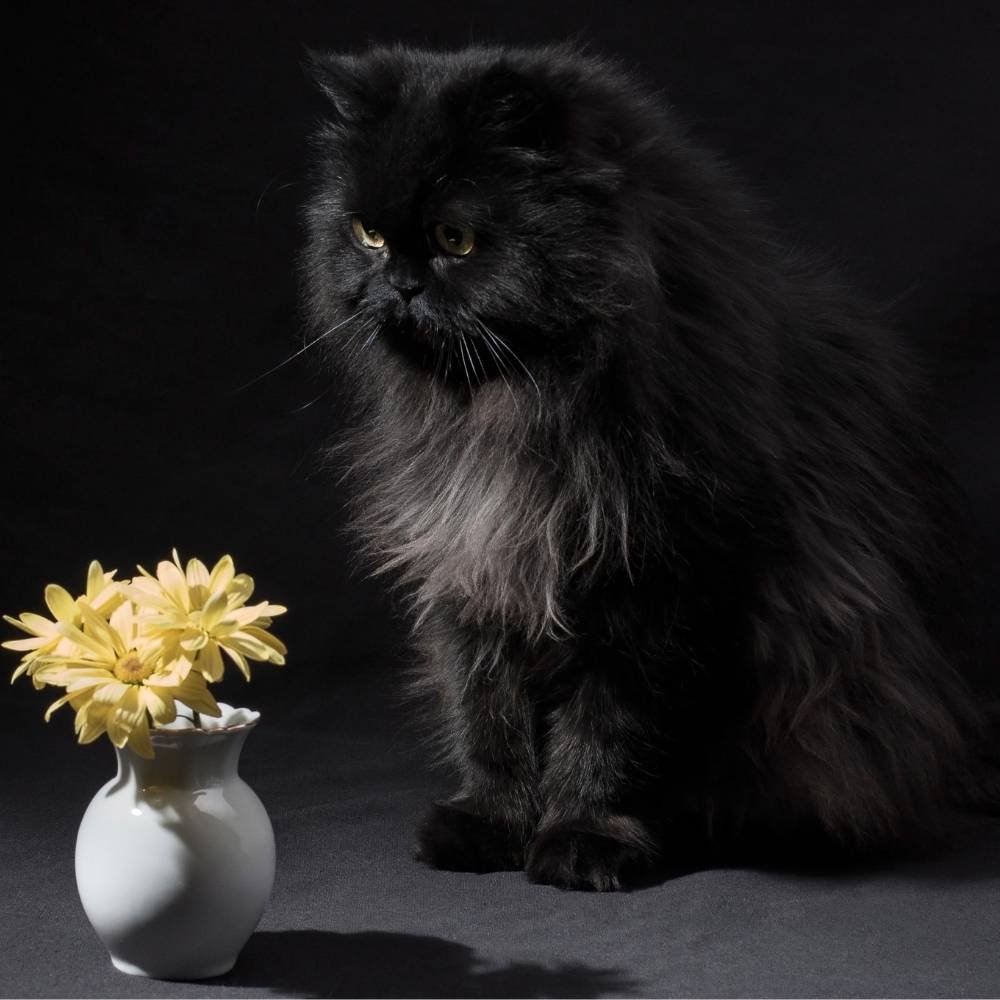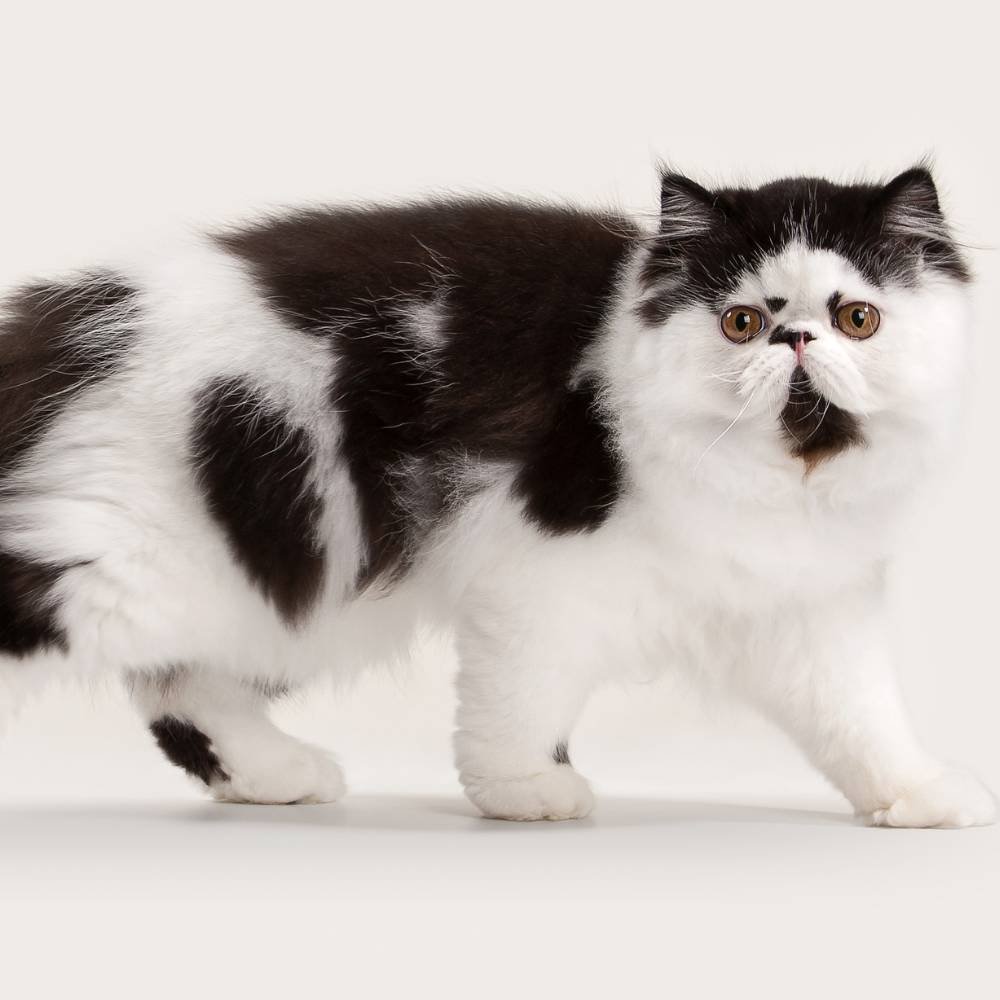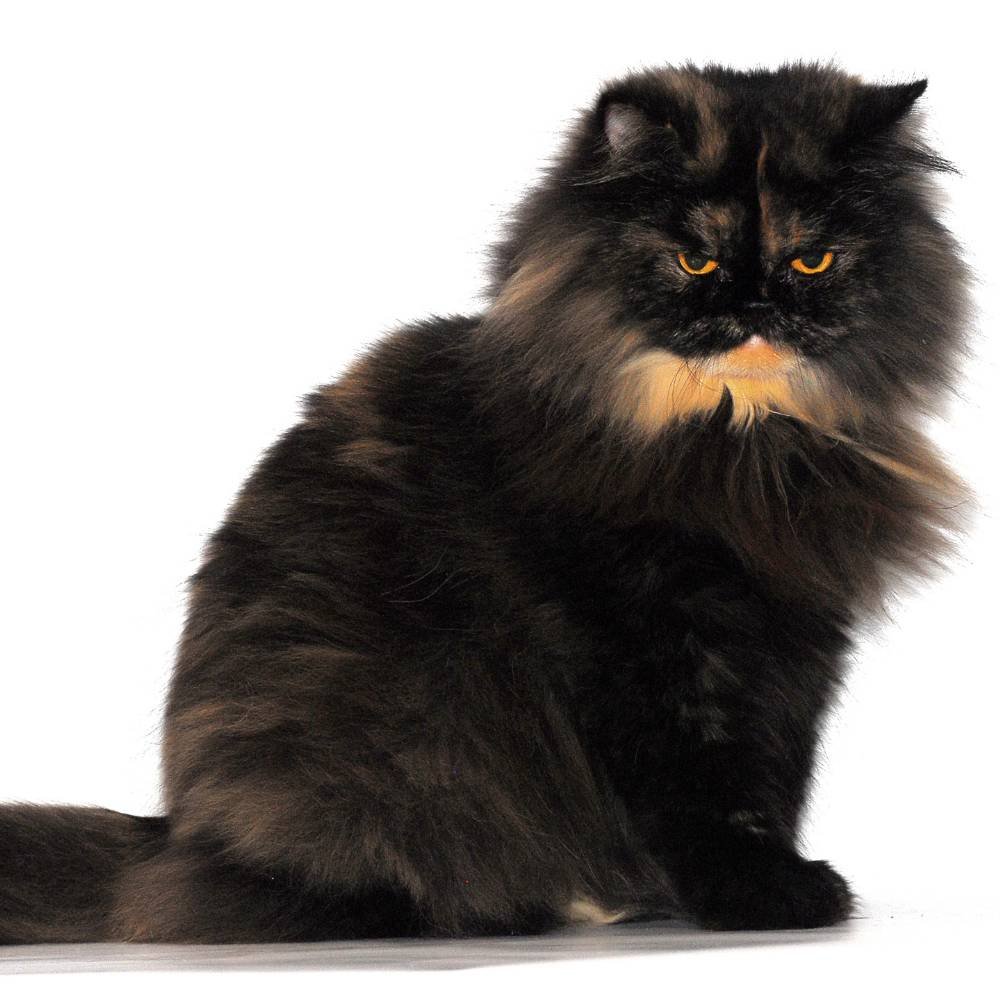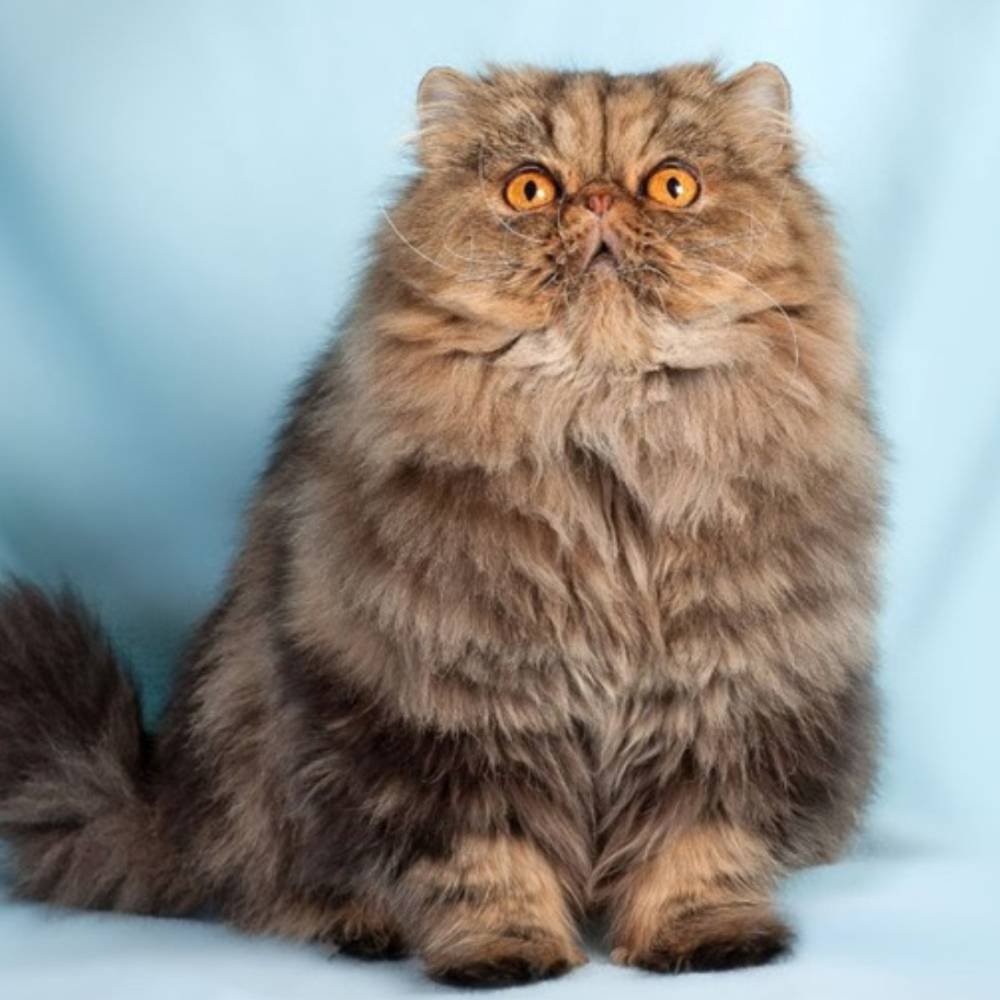
Black Persian Cat Facts
Black Persian cats are just like other Persian cats. They have the same personality traits, the same luxurious coats, the same health issues, and need the same care, with some exceptions unique to black-furred cats.
There are a variety of black fur types. Some Persian cats are black because they were born with abundant melanin pigmentation.
Melanin is the gene mechanism that produces color. Without it, a cat’s coat will be colored, and the skin and eyes will coordinate with the color of the coat.
Three alleles of the black gene regulate the eumelanin granules in the hair shaft. The dominant black allele, B, results in a black coat. This black hue can be seen in all-black cats, tabby cats with black stripes, and seal-point Siamese cats with dark ear tips, feet, and tails. Black is transformed into dark brown or chocolate by the dark-brown gene, b. Less frequently seen, this gene is usually only found in purebred cats like Siamese and Burmese. It is thought that throughout the 1800s, Siamese cats were imported from Asia, bringing the b gene with them. The light-brown gene, bl, produces the medium-brown cinnamon coat, reducing melanin density.
B – Black coat
bl – Chocolate Brown
b – Cinnamon Brown
Epistatic gene. Epistasis is when one gene is affected by one or more independently inherited genes. In other words, the black Persian cat can also be chocolate or cinnamon. Another example is having a black and white bi-color Persian cat. In this instance, the black gene is modified by the white masking, tabby, or diluted black genes.
Black Persian Cat Coats
When you think of Black Persian cats, you probably envision an ebony-colored puff of coal with deep copper eyes. However, other black coats may not be what you expect. The black gene can sometimes have mutations that allow another color gene to show.
Diluted Black Persians
You can get shades of lighter colors in black Persian cats with diluted genes. For example, you can get a blue or gray Persian, which, if a further mutation occurs, you can end up with a blue-based caramel-colored cat. Chocolate is another dilution that can lighten to lilac or taupe. Another color dilution is the cinnamon color that can lighten further to a fawn color. All these colors are black but with mutations of the black gene.

Bi-Color Black Persians
It takes a black cat to get a black and white cat and the white masking gene to create these cats. Black Persian cats come in a variety of bicolor patterns. These black Persian cats are also called piebald. These cats have any white quantity on them but aren’t entirely black. The white spots can be limited to a locket on the chest or just some white mittens, up to an almost wholly white cat except for its ears and tail.
Tuxedo Pattern
Generally, black or solid-colored cats with white chests, bellies, and paws are known as tuxedo cats. The cat appears to be wearing a white shirt underneath what seems to be a tuxedo. White patches may appear on the faces of tuxedo cats, and tuxedo patterns may also appear on tabby cats.
True or Standard Bicolor Pattern
A coat with equal amounts of solid or tabby color and white markings is described as having a genuine or typical bicolor pattern. Standard bicolor patterns appear when the color patches are distinct and divided with white markings. The body should be colored in at least half, while the remaining portions of the coat should be white.
Mask-&-Mantle Pattern
The colored fur covers the eyes, ears, and top of the head for the mask, and the mantle occurs when the color reaches down over the back, resembling a blanket draped over them. The white markings appear on the face, underside, shoulders, neck, and legs. The white markings may separate the mask-and-mantle blend, or the mixture could remain solid. The mantle can extend over the back and down the tail. When the solid coloring of the mask-and-mantle cat is black, they are known as “black mask cats.”
Cap-&-Saddle Pattern
Similar to the mask-and-mantle pattern, the cap-and-saddle pattern has a smaller colored mask. It covers a cat’s top of the head rather than a mask. In addition to being smaller, the mantle pattern now resembles a saddle rather than a blanket. The tail may be white or have a single color.
Harlequin Pattern
A harlequin-patterned black Persian cat is characterized by a primarily white coat, typically with a black tail or one of the black mutations, and a body with sporadic white areas. At least a quarter of the coat, but not more than half, is covered in patches. These specks are divided, and white surrounds them.
A harlequin cat with black patches may also be called a moo or cow cat. They look like milk cows. But even tabby, calico, or tortoiseshell cats can have these spots in any hue. Harlequin cats are also known as magpie cats at times.
Van Pattern
When the color is preserved on the head, usually just between the ears, it is said to have a van pattern. The tail likewise has a uniform hue. The coat’s body is all white. The Turkish Van cat breed, which has a similar pattern, is named after this pattern. From a distance, these cats may appear to be completely white. The color can occasionally be a subtle cream or orange that blends in with the white coat. Van-patterned calico cats are sometimes seen. They have a white coat with orange, black, cream, or tan coloration.
Mitted
Mitted cats, sometimes called gloved, only have white on their paws as if they were wearing white socks.

Tortoiseshell Pattern
Cats with the tortoiseshell pattern have a mixture of orange and black tabby fur. The hues can mix or show up as black-and-orange tabby coloring patches. Despite having what seems to be two colors, they aren’t thought of as bicolor cats because they frequently lack white fur. Calico cats are tortoiseshell cats that have some white markings.
Pointed Pattern
Cats with a pointed pattern have darker feet and faces than the rest of their bodies. That frequently happens to Siamese cats. This coat pattern is also typical of seal-point breeds. The genetics of each cat decide how dark the points will go. Thus these aren’t bicolor cats.

Tabby Patterns
Black Persian cats are the base for Persian tabbies. Once a black Persian cat’s color genetics shows the Tabby gene or Agouti gene, they can have many Tabby patterns.
Classic Tabby
The traditional tabby has a strong, swirling pattern down their sides. In some places, this tabby is called a blotched tabby. The classic tabby’s body is covered in circular smudges that nearly resemble a bullseye.
Mackerel Tabby
A mackerel tabby has parallel, fine stripes down her flanks that are referred to by some as a tiger cat. Vertically aligned, thin lines can be seen on the body’s sides. The stripes should be continuous and equally spaced. The name mackerel describes them because they branch out from a single line that runs down the top of the cat’s back down the spine.
Patched Tabby
A tortoiseshell cat with the tabby gene showing is frequently called a torbie. Any one of the aforementioned tabby patterns can be seen in patched tabbies. Usually, the legs and head are where the markings are most noticeable.
Spotted Tabby
The flanks of these cats are covered in spots. These patches can be big or little and occasionally resemble shattered mackerel stripes. They might be rosette-shaped, spherical, or oval. A broken-patterned mackerel tabby frequently resembles a spotted tabby.
Ticked Tabby
A ticked tabby cat, also known as an Abyssinian tabby or an Agouti tabby, lacks the typical spots or stripes on their body and may not initially appear to be one. However, this coat pattern has agouti hairs across the body and tabby markings on the face, much like all tabbies.
How do agouti hairs work? The individual hairs, known as agouti hairs, can be seen striped with alternating light and dark bands if you examine the lighter areas of a tabby’s coat closely. Although it also exists in mixed breeds, the ticking pattern is most noticeable in Abyssinians.

Black Cats May Help With Illness
Different genetic mutations cause the black coats on different cat species. Researchers from the National Cancer Institute and the University of Maryland discovered that some abnormalities are in genes connected to human diseases like AIDS.
Because these genes frequently give protection against disease, Dr. Stephen O’Brien, Eduardo Eizirik, and others pondered what made cats black rather than just out of idle curiosity. Animals with distinctive colors would become extinct in that case.
In a phone call, O’Brien said: “By comprehending how wild species like cats evolve genetic resistance to disease, we might discover new natural genetic resistance that might help in human disease.”
“But there is another fascinating aspect which I noticed because I work with the Cancer Institute,” he said, adding that black cats may be better equipped to hunt at night.
For instance, his research discovered that a gene called MC1R may be altered to turn jaguars black. Additionally, humans have a gene called MC1R that, in some cases, results in red hair.
It belongs to the gene family known as 7-transmembrane receptors. A receptor serves as a cell’s entry point, and bacteria and viruses frequently use it to infect cells.
According to O’Brien, “HIV enters cells through a 7-transmembrane receptor called CCR5”. Therefore, it’s possible that something other than camouflage was the selection pressure allowing these changes to survive in cats. Perhaps the cats’ resistance to pests is the result of mutations.
The team’s next move will be to investigate any potential benefits the mutations might present. O’Brien suggested that a secondary effect might be turning the cats black. According to him, 99.99% of all mammal species are extinct. “The ones we have now are the survivors,” he continued. The team’s initial question was why there are black house cats, leopards, and jaguars but no black tigers or lions. Forty or so cat breeds are the consequence of approximately ten genes controlling a domestic cat’s look and coat color.
Since the black mutation is common, O’Brien and his team pondered whether it originated from a distinct species or the oldest ancestor of all cats.
They reported their findings in the journal Current Biology, claiming that different types of mutations are responsible for the coloring of various animals, including the tiny South American jaguarundi, the jaguar, and the black domestic cat.
Conclusion
There you have it—some interesting facts about black Persian cats. While the black Persian cat is just like any other color of Persian cat, they have differences in how their fur color is produced. We hope you learned something about black Persian cats and enjoyed this article. Did this help you understand why your black Persian is black or why they may have the pattern or markings they do? Now you have an answer. If you liked our article, please leave any questions or comments below.